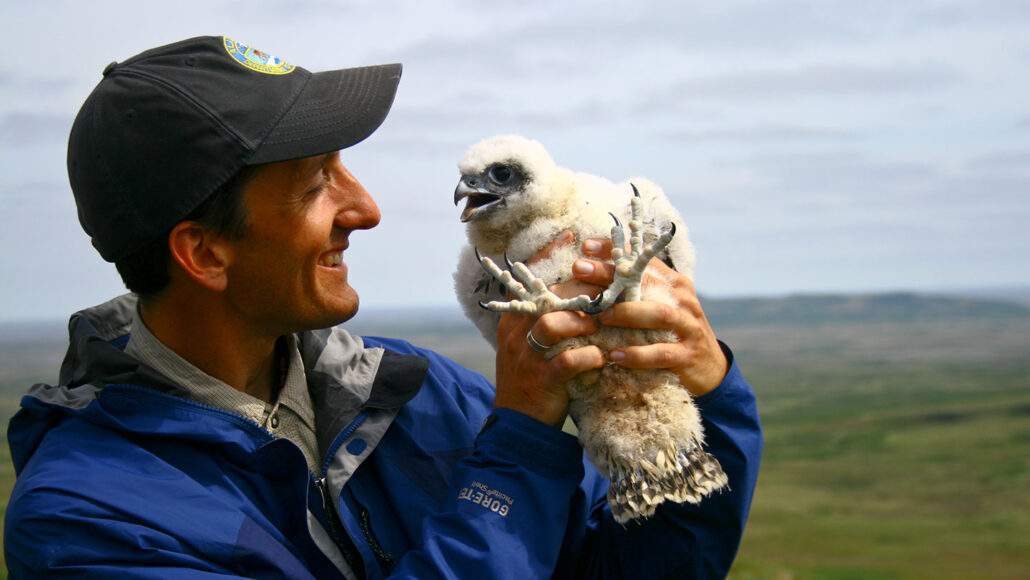Questions for ‘Endangered or just rare? Statistics give meaning to the head counts’

Wildlife biologist Travis Booms holds a young gyrfalcon. “It's really important that biologists have a basic understanding and foundation in statistics,” he says. That understanding helps him study birds and other animals for the Alaska Department of Fish and Game.
Robert Goodwin